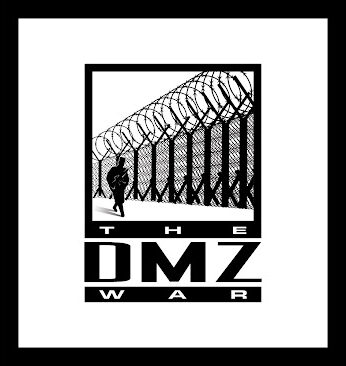 It was the sort of surprise no combat pilot wants. As his small, propeller-driven “Mosquito” spotter plane droned along over the Korean battlefield, the U.S. Air Force pilot spotted a far faster enemy jet roaring in for a kill. Only quick action allowed him to escape by executing “several 360-degree turns” to shake off his less agile adversary. But when the report of the encounter made it to Air Force intelligence, what analysts found most remarkable was not their pilot’s skill, but the identification of the attacker –a “hostile F-84,” an American fighter jet. This was no isolated case of mistaken “friendly fire,” officers feared. In late 1951 and 1952, numerous American pilots reported sighting, and even being attacked by, several types of “hostile” U.S. fighters, sometimes spotted flying in formation with enemy MIG-15s. Previously classified records obtained by KorCon detail these incidents and that Air Force intelligence believed even its new, top-of-the line jet fighter was involved, reporting indications in 1952 that the Soviet “enemy has put an F-86 aircraft into operation in Korea.” These reports represent more than the potential need to update a chapter of history; evidence of Soviet acquisition of American technology raises again the far more important issue of American pilots captured and never returned by Moscow during the Korean War. Additional documents and interviews obtained by KorCon – from Soviet veterans to CIA documents possibly never shared with previous congressional investigations — provide additional evidence that dozens of U.S. pilots were shipped to the Soviet Union. The records also make clear that Washington essentially abandoned serious efforts to recover the men or their remains in the face of Russian intransigence and deceit in recent years. (This report does not deal with related reports of hundreds of other Americans, including Army soldiers, shipped to Siberia in trains or the Americans known to be in North Korean and Chinese hands but never returned; for more on them see www.kpows.com). The U.S.-Russia Joint Commission on POW/MIAs (USRJC), a Presidential commission supported by the Pentagon, produced important information in the 1990s, but is now essentially defunct due to Russian foot-dragging and an absence of U.S. resolve. The former senior staff member for the American side of the Commission says the Pentagon simply dropped the most recent plan to restart the process, proposed in 2010. “Why does the (2010) work plan that was developed — by the way, at the Russians’ suggestion and with their full concurrence — continue to lie fallow even though it offers the only serious, agreed-upon way of moving forward?” asked Norm Kass, former head of the U.S. Joint Commission Support Directorate (JCSD). “Another 20 years have passed and we are no closer to answers than we were 20 or 60 years ago,” said Lynn O’Shea, Director of Research for the National Alliance of Families, which represents the families of Americans missing from conflicts since WWII. Rick Downes, President of the Coalition of Families of Korean and Cold War POW/MIAs, urged President Obama to step forward and focus the attention of his administration on the fates of the pilots and similar cases, including reaching out to Russian President Vladimir Putin. “We’re not after recrimination. We only want answers,” Downes said. KorCon asked the Pentagon to provide an update on its efforts and issues raised in this report, but no response was received by deadline. We’ve posted declassified documents, video and pictures from this report at www.koreanconfidential.com. Pentagon Relelase on Recent History of US-Russia Presidential Joint Commission on POW-MIAs (USRJC): Putin Shut it Down for Years, Now Former Senior US Staffer Says It’s Failing (Again) to Follow Up Aggressively on Casesof Americans Known or Suspected to Be Alive in Soviet Hands During & After the Korean Warhttp://www.dtic.mil/dpmo/news/factsheets/documents/jcsd_factsheet.pdf  Compare the Aircraft:MIG-15 and F-86 Sabre Directly BelowF-86, F-84 and F-80 in Flight with MIG-15s BelowBoth F-86 and MIG Have Swept Wings (Those on F-80 & 84 Are Straight) Compare the Aircraft:MIG-15 and F-86 Sabre Directly BelowF-86, F-84 and F-80 in Flight with MIG-15s BelowBoth F-86 and MIG Have Swept Wings (Those on F-80 & 84 Are Straight) |
F-86  | F-84  | F-80  Courtesy: GNU Free Documentation License Courtesy: GNU Free Documentation License |
| Information on the mysterious “hostile” American fighters and fate of U.S. pilots comes from more than 4,000 pages of previously secret Air Force intelligence records reviewed by KorCon; CIA documents declassified in recent years; and now-public files from Pentagon investigators in the 1990s, including a declassified report provided by POW/MIA researcher John Zimmerlee, an official of POW/MIA family groups whose father is missing in the war. During the Korean War, the U.S. and Soviet Air Forces were effectively at war over the skies of Korea. Spectacular dogfights raged in the so-called “MIG Alley” near the northwestern border of North Korea with China’s Manchuria region. The Soviets, who pretended to be North Korean or Chinese, flew MIG-15 fighters from sanctuaries in China, protected by a border with North Korea that American pilots were generally forbidden to cross. The Soviets and Americans believed global war with one another was quite possible, so each side scrambled to get its hands on the technology and pilots of the other. Moscow later confirmed, during a 1990s period of cooperation with the U.S., that it dispatched special teams designed to capture an advanced American F-86 and gather all sorts of other American technology.The Soviets were masters at “reverse-engineering” defense technology, in other words stealing and copying the technology of others. Their TU-4 bombers were based on American B-29 bombers obtained in World War II, and the MIG-15’s engine was from British design. On the Soviet’s Korean War shopping list were U.S. fighters, especially the F-86; RB-45 and other reconnaissance planes; updated versions of the B-29 and helicopters. At least one F-86 (by some reports two) was sent to the Soviet Union, the Russians admitted, and other planes and prizes such as U.S. G-suits and radar gun sights also went. |
